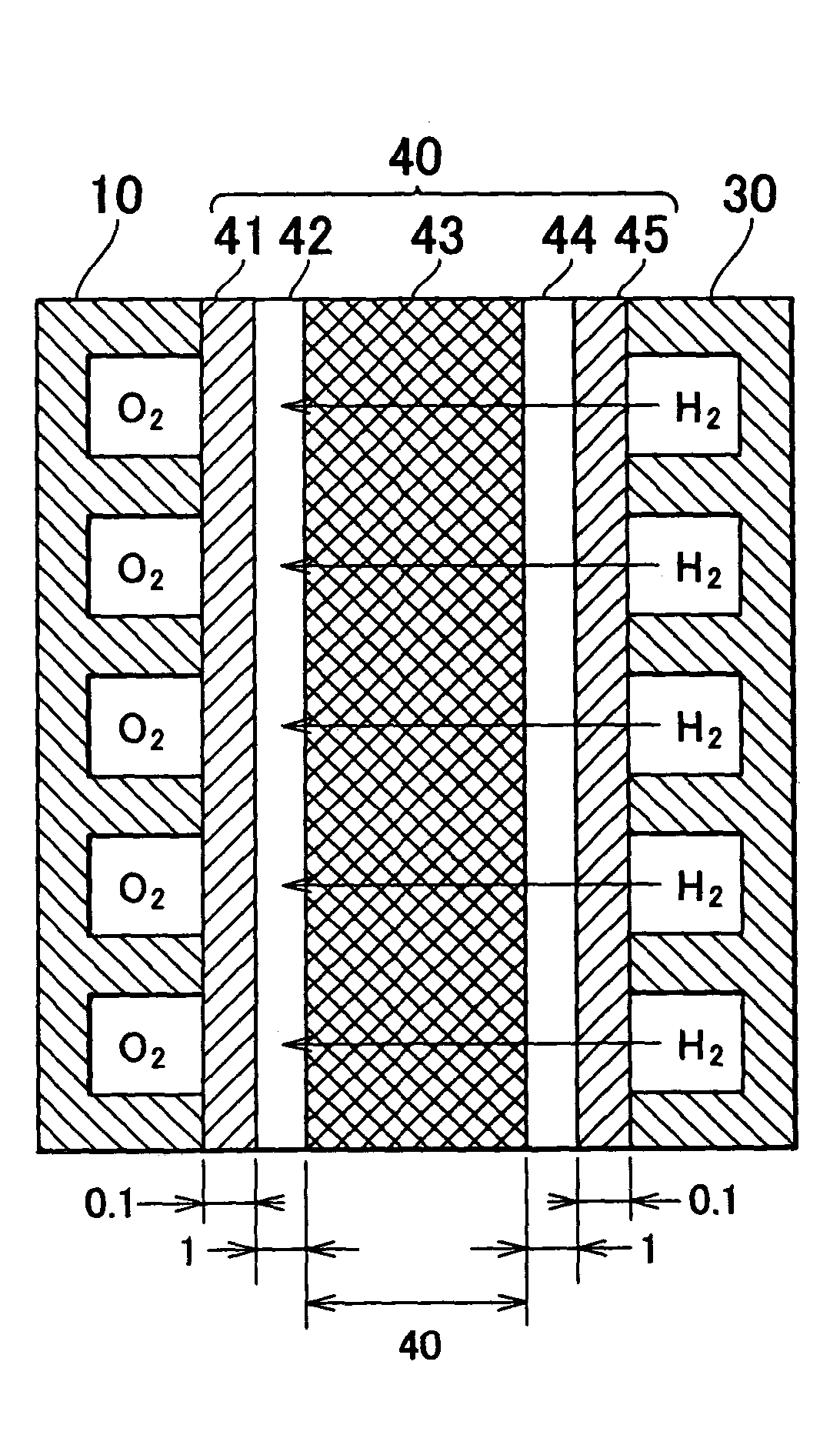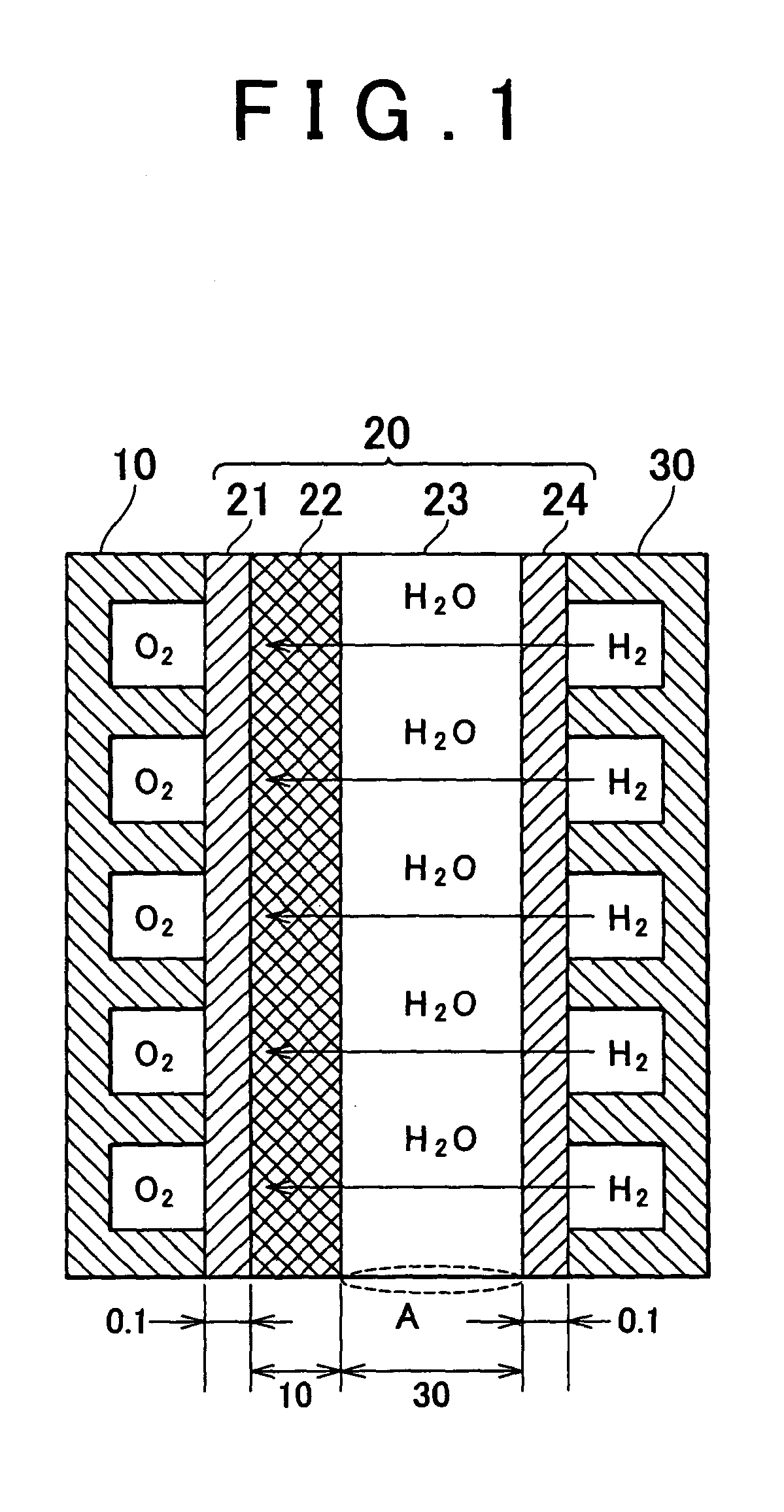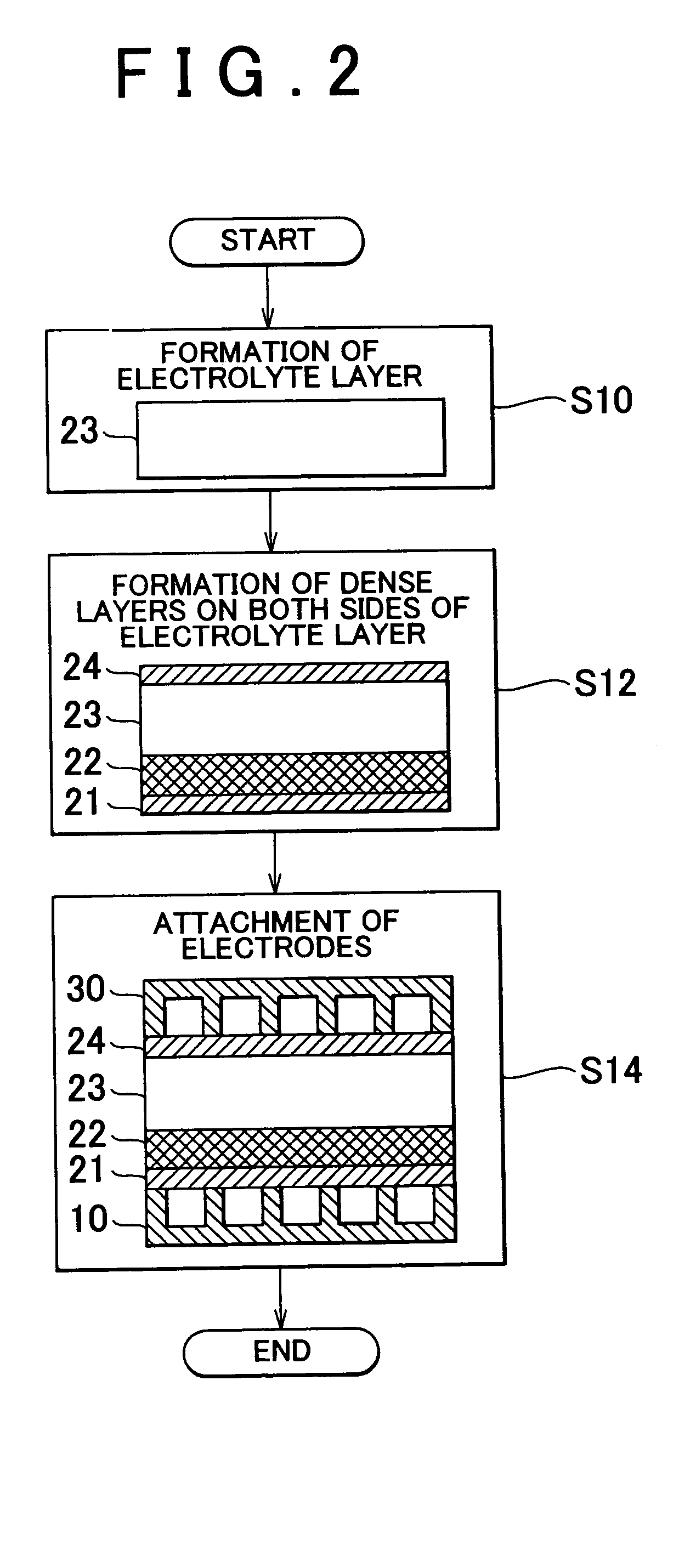Electrolyte membrane for fuel cell operable in medium temperature range, fuel cell using the same, and manufacturing methods therefor
a technology of electrolyte membrane and fuel cell, which is applied in the direction of sustainable manufacturing/processing, non-metal conductor manufacturing, and final product manufacturing, etc., can solve the problems of reducing the resistance of the membrane, difficult to form a dense thin membrane on an electrode formed from a porous material, and increasing the resistance of the electrolyte membrane. , to achieve the effect of reducing the operating temperature range of the low temperature fuel cell and suppressing the resistance of the electrolyte membran
- Summary
- Abstract
- Description
- Claims
- Application Information
AI Technical Summary
Benefits of technology
Problems solved by technology
Method used
Image
Examples
first embodiment
[0031]the invention is described herein below.
[0032]FIG. 1 is an explanatory view schematically illustrating the configuration of a solid polymer membrane fuel cell according to the first embodiment of the invention. The figure shows a cross-section of a constituent cell of the fuel cell. This constitute cell has a structure in which an electrolyte membrane 20 is sandwiched between an oxygen electrode 10 and a hydrogen electrode 30. The oxygen electrode 10 is provided with a flow path for supplying air serving as an oxidizing gas. The hydrogen electrode 30 is provided with a flow path for supplying a hydrogen-rich fuel gas. The oxygen electrode 10 and the hydrogen electrode 30 may be formed from various materials such as carbon.
[0033]The electrolyte membrane 20 has a multi-layer structure in which an electrolyte layer 23 formed from a solid polymer membrane is sandwiched between hydrogen permeable dense metallic layers. As the electrolyte layer 23, for example, a Nafion membrane (“N...
second embodiment
[0048]The electrolyte membrane 40 has a five-layer structure in which a dense substrate 43 formed from vanadium (V) is centrally disposed. Thin layers respectively constituted by electrolyte layers 42 and 44 that are made of a solid oxide are formed on both sides of the substrate 43. A barium-cerate-based (BaCeO3-based) ceramic proton conductor or a strontium-cerate-based (SrCeO3-based) ceramic proton conductor may be used as the material for the electrolyte layers 42 and 44. Coatings 41 and 45 of palladium (Pd) are provided on the outer surfaces of the electrolyte layers 42 and 44, respectively. In the second embodiment, the thickness of the coatings 41 and 45 of palladium (Pd) is set to be 0.1 μm. The thickness of the electrolyte layers 42 and 44 is set to be 1 μm. The thickness of the substrate 43 is set to be 40 μm. However, the thickness of each of the layers can be set as chosen. Moreover, instead of palladium (Pd), for example, vanadium (V), niobium (Nb), tantalum (Ta), an al...
PUM
| Property | Measurement | Unit |
|---|---|---|
| Thickness | aaaaa | aaaaa |
| Permeability | aaaaa | aaaaa |
Abstract
Description
Claims
Application Information
 Login to View More
Login to View More - R&D
- Intellectual Property
- Life Sciences
- Materials
- Tech Scout
- Unparalleled Data Quality
- Higher Quality Content
- 60% Fewer Hallucinations
Browse by: Latest US Patents, China's latest patents, Technical Efficacy Thesaurus, Application Domain, Technology Topic, Popular Technical Reports.
© 2025 PatSnap. All rights reserved.Legal|Privacy policy|Modern Slavery Act Transparency Statement|Sitemap|About US| Contact US: help@patsnap.com



